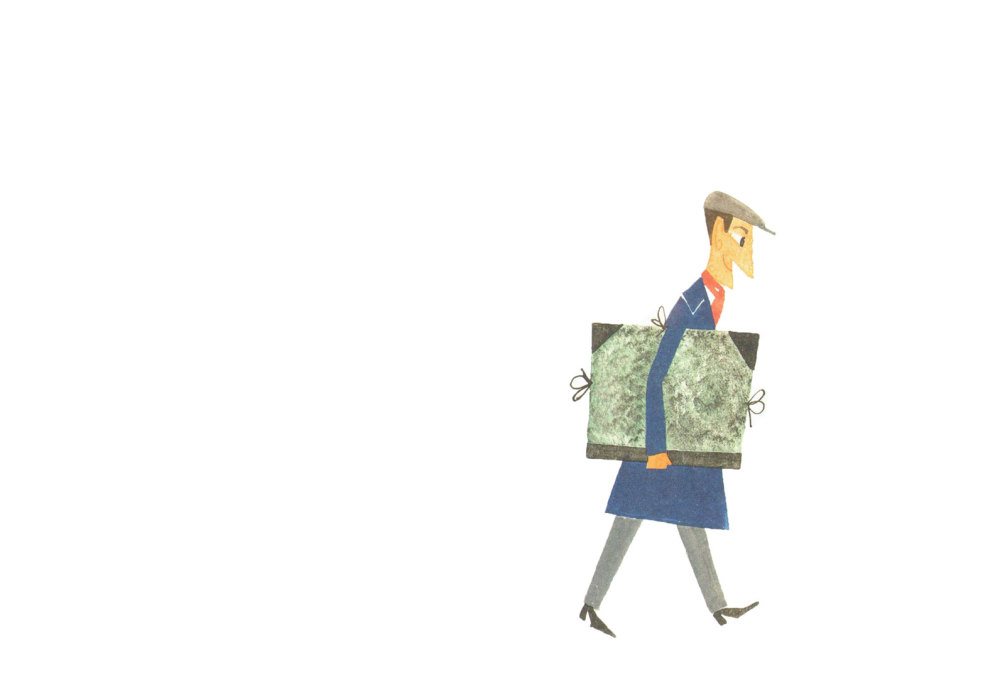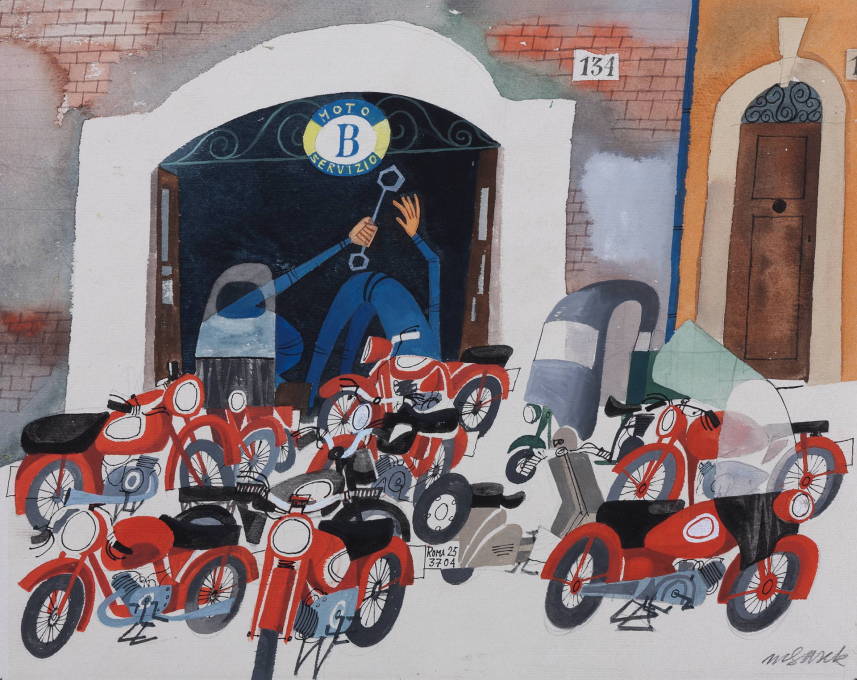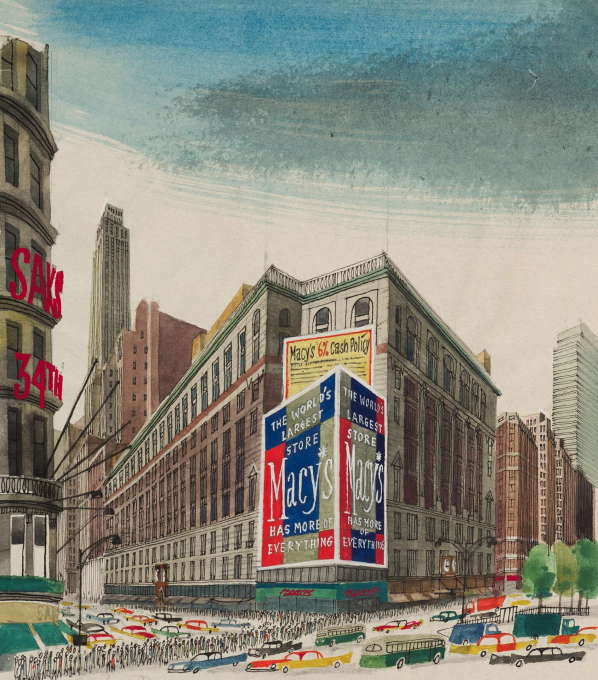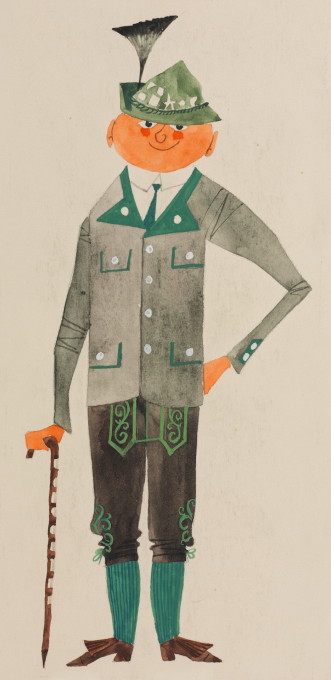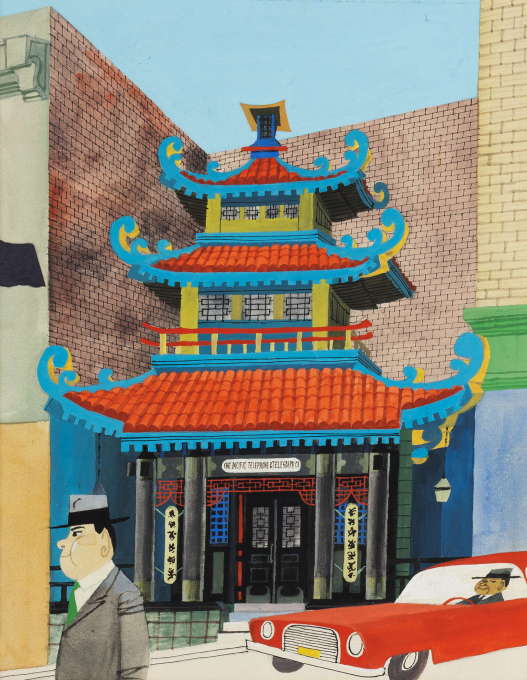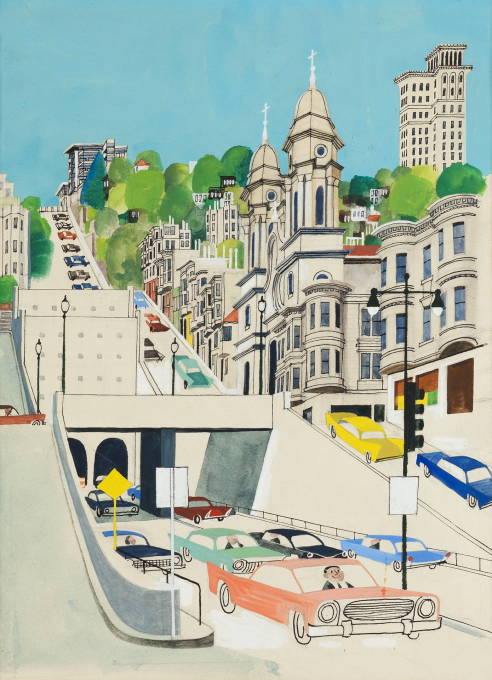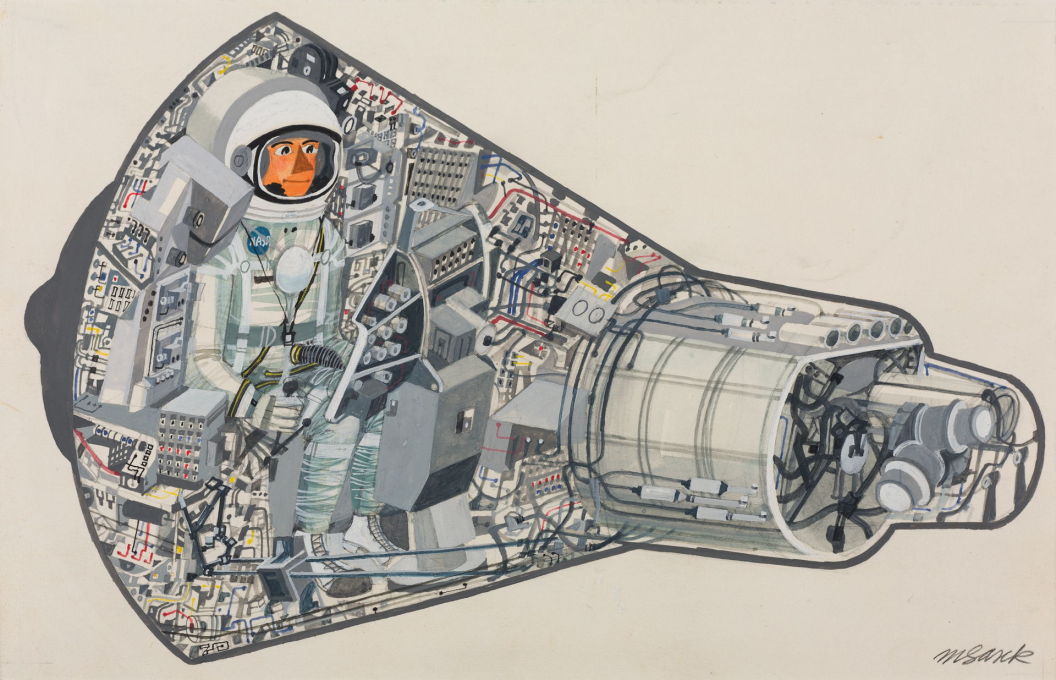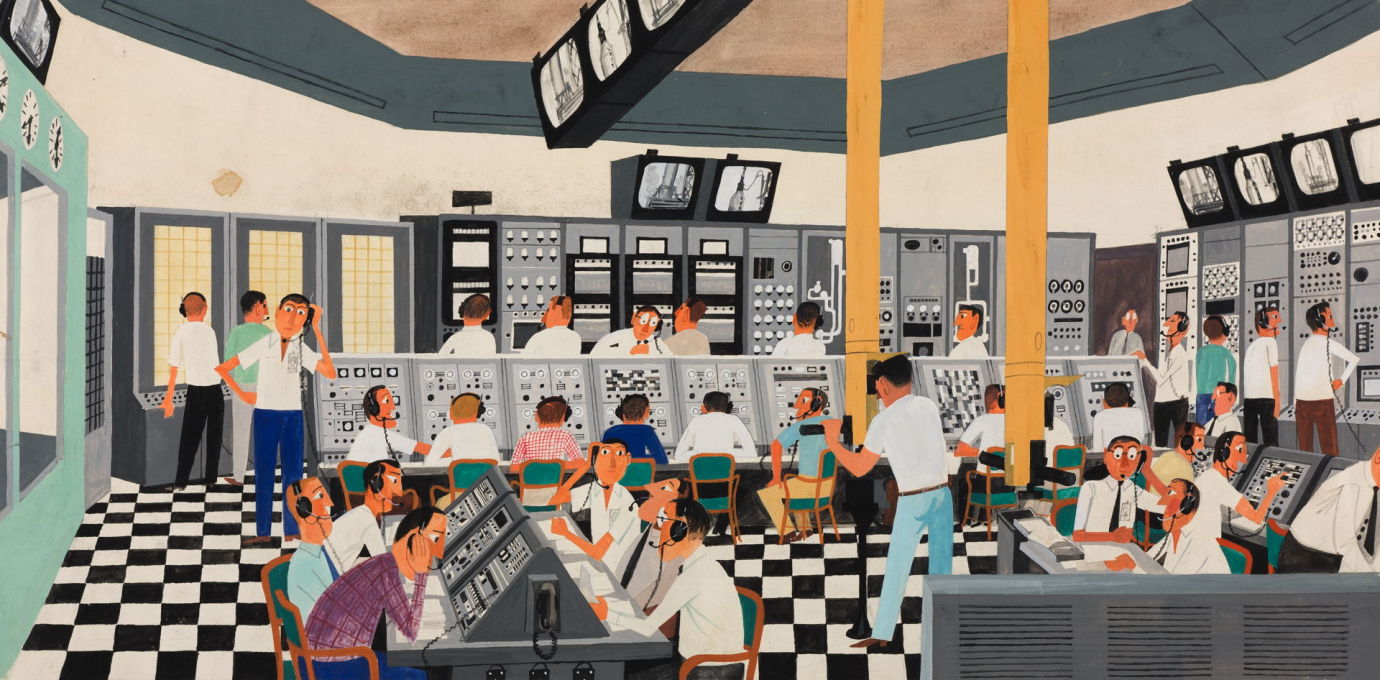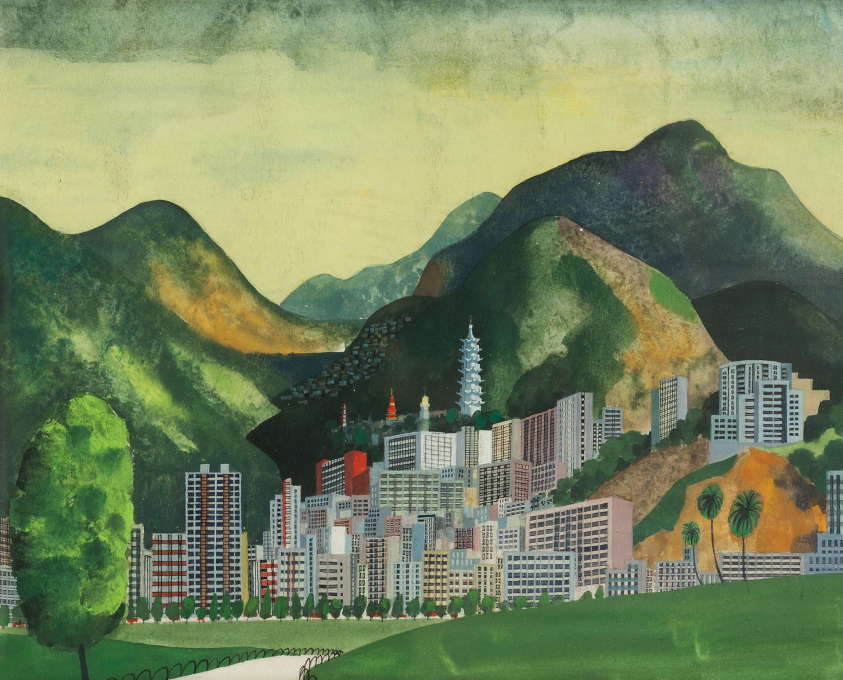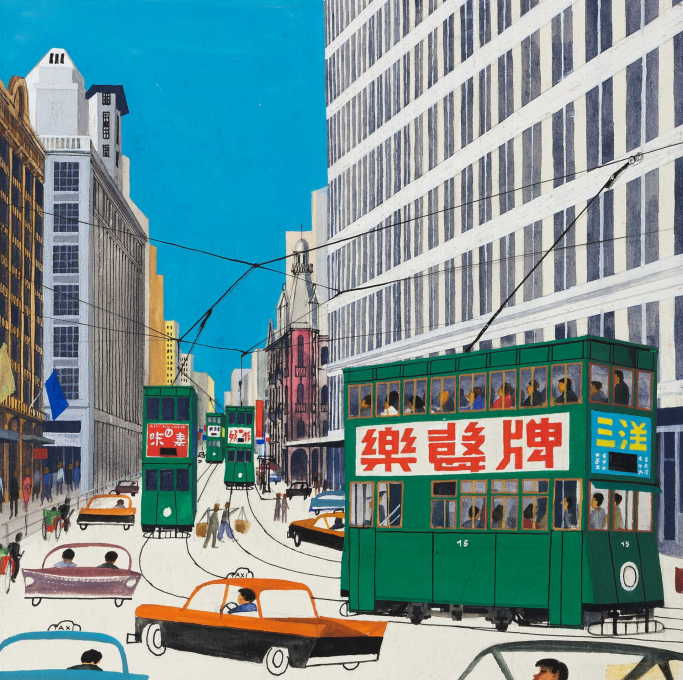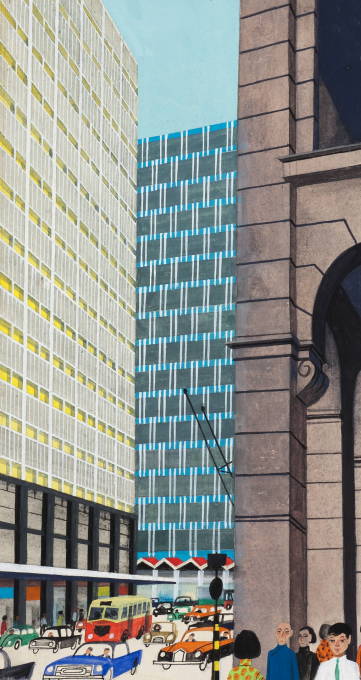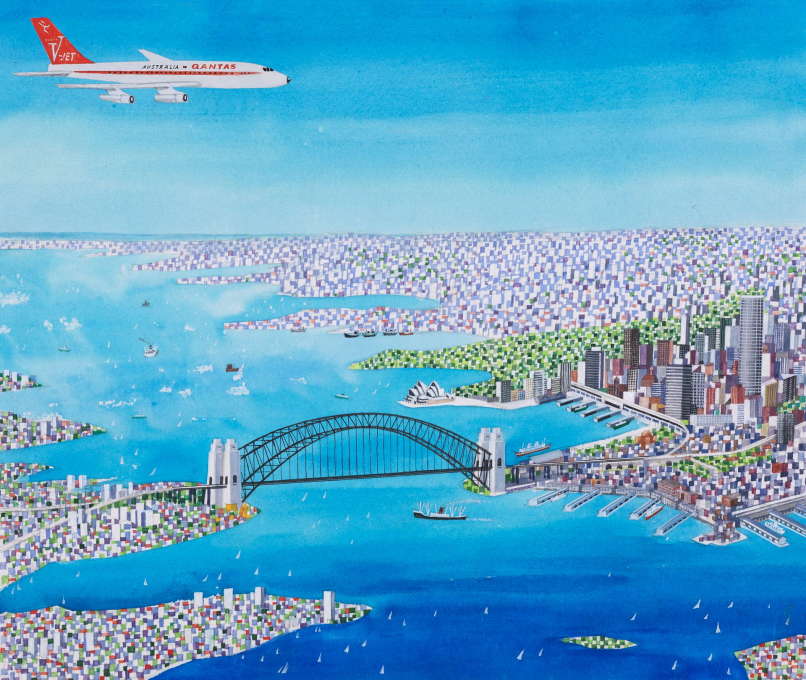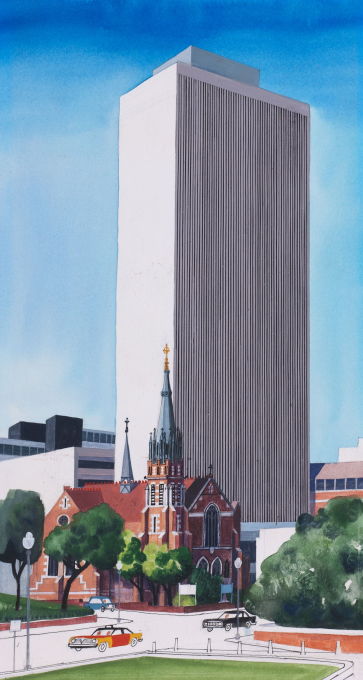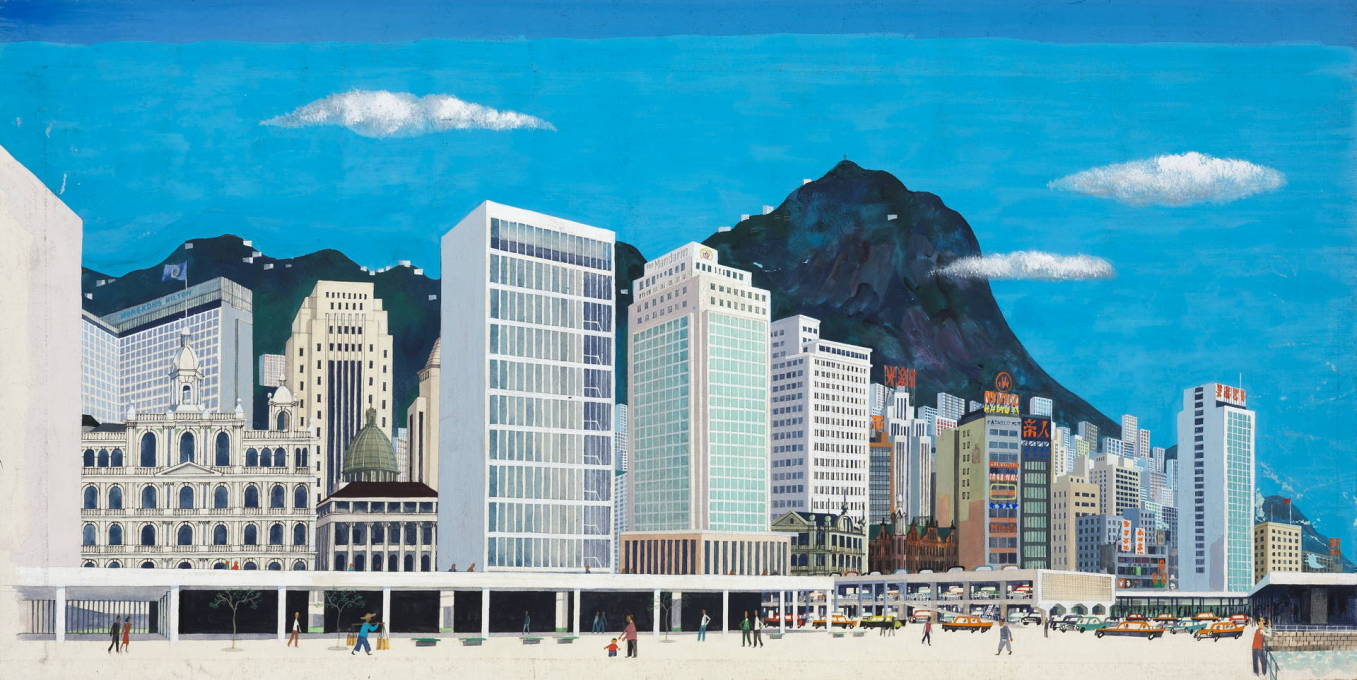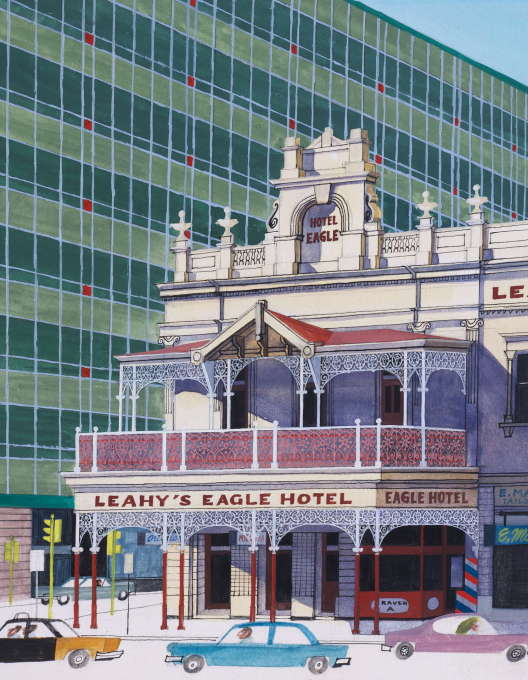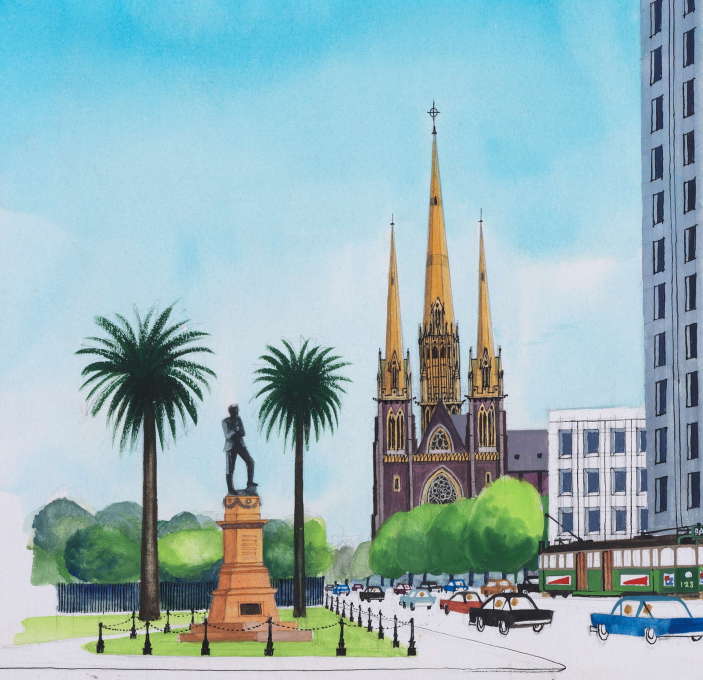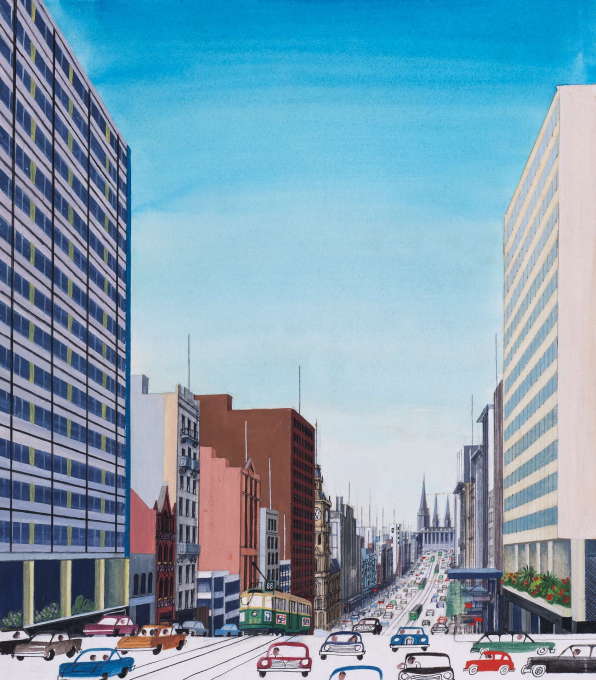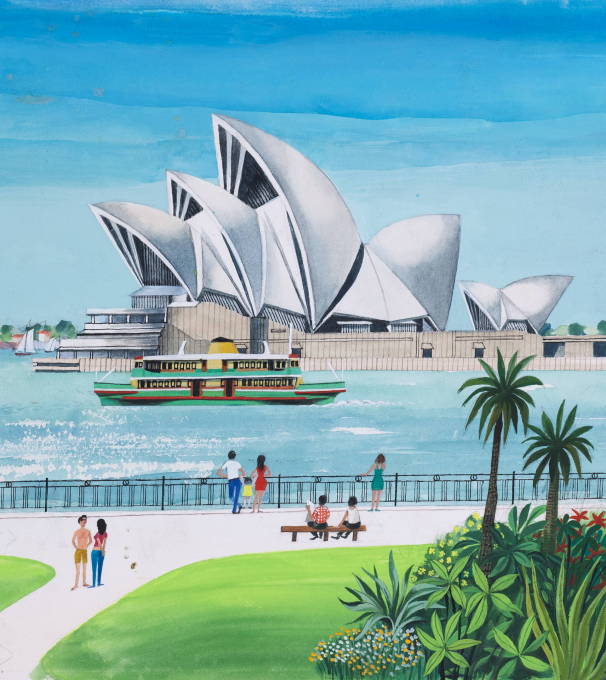Seeing as it is supposedly spring in Berlin, we felt it′s a good time to rediscover the colourful work of the Czech author, illustrator and trained architect Miroslav Šašek. Over a 15 year period, between 1959 and 1974, he produced 18 of his This is... series of illustrated books for children. Starting with This is Paris, and progressing through other major capitals of the world, and a few countries too, his illustrations bring to life not just the historic architecture but revel in the contemporary urban mix that was radically transforming post-war cities: the modernist blocks, tall glassy façades, planes, cars and adverts of the new consumer society. Inspiring work – enough to make you want to dig out your old brushes and paints...
Miroslav Šašek was born on November 16, 1916 in Prague, into a family of millers. At school, and keen on drawing, he made up his mind to become an artist, but his parents insisted on him studying for a profession with financial prospects. So he studied architecture at the Czech Technical University, but never stopped drawing and painting. This combination of knowledge and skills would prove invaluable for his later observational illustrations of the city.
After his studies, Šašek began producing illustrations for newspaper articles and books. Towards the end of the 1930s he also travelled extensively, visiting England, Germany, the Netherlands, Belgium, Italy, Spain and North Africa.
After the disruption of the War, he got the chance to make his first children's book, which he both illustrated and wrote, called: Benjamin and the Thousand Sea Creatures of Captain Barnabas, which was published in Czechoslovakia in 1947.
By then Šašek had already left his native land to continue his studies at the École des Beaux-Arts in Paris, while still continuing to work as an illustrator for Czech publishers. He intended to return, but when one of his publishers was arrested and sentenced to ten years in prison after the Communist revolution in Czechoslovakia, Šašek decided to remain in Paris. He earned his living by working as an architect and advertising graphic designer. But he continued to produce for Czech magazines and publishers whilst in exile, illustrated anti-communist flyers for Radio Free Europe which were then carried into Czechoslovakia by hot air balloon throughout the 1950s.
It was in 1959 with the publication of his book This is Paris by W.H. Allen in London, that his work gained much more widespread recognition. He described the genesis of the book thus: “I wanted to paint Paris in a completely different way... Paris, what it really is like. As I saw it when I came for the first time, and also how I see it now.” His was a very distinctive graphic style: simple sentences and facts accompanied by large, colourful drawings filled with life and a humour which appeared very sensitive to and engaged with the atmosphere of the places he depicts and the habits of their inhabitants. Such was the success of the book, that he went on to produce many more This is... editions at a prolific rate, sometimes as many as three books a year. With them he transported his young (and not so young) readers to cities, countries and places all around the world: London, Munich, Rome, New York, San Francisco, Cape Canaveral, Hong Kong, Australia and Israel, to name but a few – although never of course to Soviet-bloc countries or his own home of Prague – a city he would never visit again.
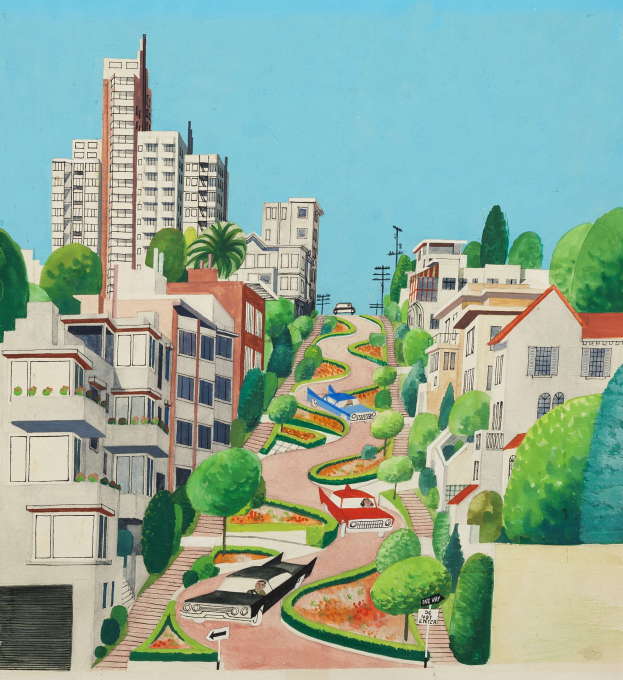
Normally understood as illustrated city guides for children, we can now see his books to be much more than that. With the precise eye of an architect, he happily combined the historic with the modern buildings of his time; modernist high-rises loom above church towers, generic façades of glass and steel form the backdrop to many street scenes. Thus he depicted contemporary life in the cities of his time – how people were living in and remaking their environments – instead of turning them into neat historic images or touristic ciphers. His illustrations even touch on and include observations of political or cultural circumstances, such as in his depiction of the Arab and Jewish populations in This is Israel, in short comments on the urbanisation of Hong Kong, or the way he painted the relationship between white and Indigenous Australians. Yet his comments always appear benign and rather subtle; suggesting a man who was not judgemental, but who also did not look away or blink at what he saw. And all his characters and places were depicted in a deeply human way.
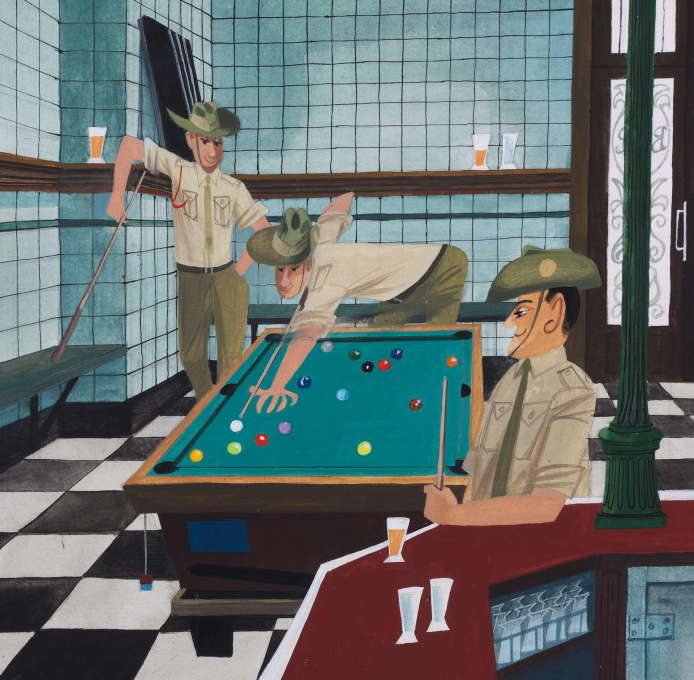
It is this that makes his books, which were acclaimed worldwide in the 1960s and ′70s, so much more than just childrens’ books. Of course looking back from today′s perspective adds a certain nostalgic glaze to them and the energy of the mid-century modern world they depict – but at the same time their relevance and currency lies in the remarkably clarity of Šašek’s observations.
Miroslav Šašek died on 28 May 1980 in Switzerland. His books fell into relative obscurity for almost 20 years until after 2000, when publishers started printing them anew. The entire This is... series in English, French, and German is now available in print again. In 2011 the Sasek Foundation was founded in Prague, to look after his legacy: producing books and organising exhibitions and presentations of his work all over the world. And, at last, in 2013, his books were finally translated into Czech, making them available in his home country and mother tongue for the first time.
– Florian Heilmeyer.




